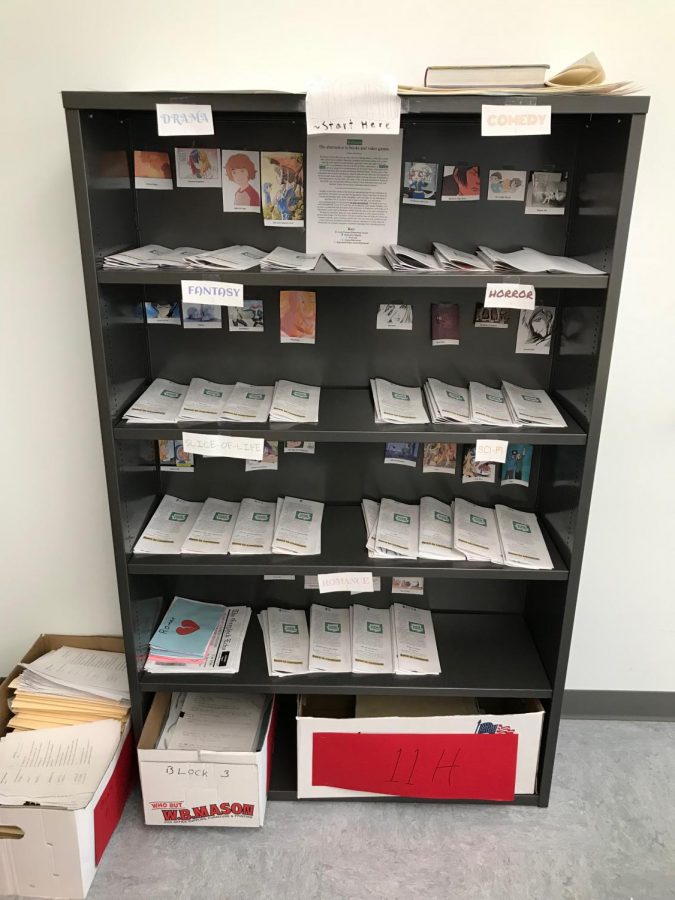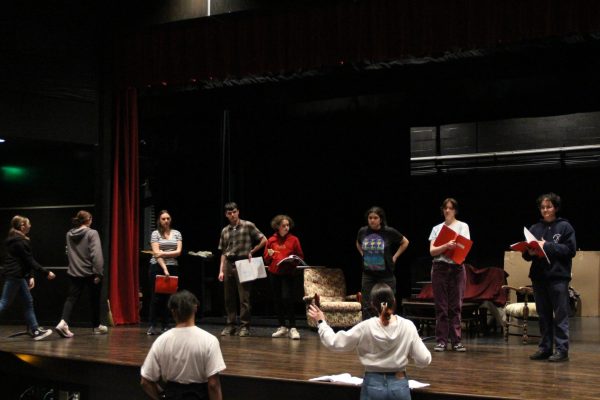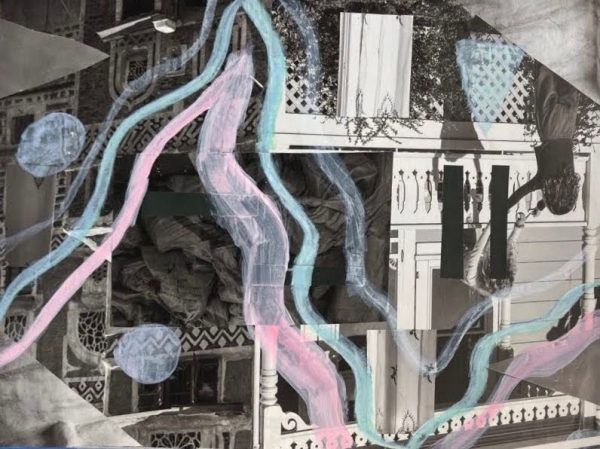Freshman’s Webcomic Interest Leaves Mark on Directed Study Classroom
As cell phone use rises, one student has found an alternate use for her free time.
Photo courtesy of Owen Tucker-Smith
Simon’s webcomic library in Ms. Houle’s classroom.
Many of the over five hundred students at Mt. Greylock have access to the internet. They will find refuge in social media, youtube videos, the news, or texting. For freshman and new student Ava Simon, the internet is also the home of a unique form of entertainment: webcomics.
According to Simon, webcomics are “an alternative to books and video games” that take the form of visual, online novels. They are free, accessible online, and, as a result of Simon’s organizational efforts, categorized.
Simon’s creation takes the form of a Google Drive document. With a conversational tone and teenage perspective, the introduction explains that “webcomics are actually entertaining,” featuring “plot and character development… great art and visual design… I thought those died a looong time ago.” The document features “only the cream of the crop” – the select webcomics that Simon believed to be worth students’ time.
Simon’s interest in webcomics is not brand new. As a student in East Greenwich, Rhode Island, she had recommended webcomics to some of her peers. “I’ve gotten a lot of mixed results from them, from full-on fangirl to mild annoyance,” explained Simon. Her project at Mt. Greylock marked a massive expansion of this practice, and it is this school where she hopes to create a culture surrounding a form of literature that, according to Simon, “wield[s its] artistic expertise to convey human emotions with a subtly not often found in books.”
The root of this passion can be traced back to a specific webcomic experience, said Simon. “I was really bored one day and was searching through some webcomics until a found one called ‘My New Friend is a Cat,’” she explained. “I read it… and now I’ve sold my soul to it. It’s just so good! It has literally everything I could want in a story: genuinely compelling characters, heartwarming moments, unforced drama, originality, good art, a changing status quo. I cannot stress how much I love it.”
After reading “My New Friend is a Cat,” Simon ended up reaching out to the author to express her excitement about it, and wound up with a reply. A back-and-forth correspondence about the webcomic left her with a new friend as well as a deeper understanding of “their love and absolute dedication for their webcomic.”
It was this understanding, as well as the observation that the author’s “hard work was going vastly unnoticed,” that prompted Simon to engage in a project that would spread awareness about “My New Friend is a Cat.” This project grew into a broader webcomic recommendation system.
Simon’s directed study fascination comes at a time in which cell phones play an increasingly large role in the school day, both at Greylock and at high schools across the country. In a recent student survey by research firm Survata, 54 percent of respondents admitted that they text friends during class and 52 percent said that they scroll through social media. Study halls, then – including Greylock’s Directed Study – are embraced by many students as times to catch up with the internet.
This trend parallels a drop in the enjoyment of other media: in recent years, less than one in every five teenagers reported reading books or newspapers daily for pleasure, the American Psychological Association found.
Webcomics, explained Simon, aren’t necessarily Charles Dickins novels, but they aren’t Instagram either. And given that they offer dimensions beyond those of traditional literature, they should be a go-to for “those with too much free time,” she said.
Simon’s online library splits webcomics into seven categories: drama, comedy, sci-fi, romance, horror, fantasy, and slice-of-life. It also labels them for specific potential issues, including gore and violence, romantic subplots, profanity, sexual references, and depression. Within the library, users can click links to comic-specific pamphlets, which include organizational codes, a description, some analysis, and a link to the webcomic.
According to Simon, reading webcomics can be a transformative experience. But on a simpler level, she hopes that her recommendations will provide Mt. Greylock students with something to do during directed study when they do not have homework. Reading webcomics, she explained, is an option that may be more enriching than cell phone games and social media.
Readers can access Simon’s webcomic website, which contains a link to the Google Drive library, here.
Owen has been on Echo staff for three years. When not writing, editing, and publishing stories, he can be found doing nerdy things (playing the piano, participating in Model UN), stupid things (skiing up hills - apparently that's a thing?), and productive things (watching Greys Anatomy). He loves editing the Echo because pestering other people about deadlines is his specialty.






